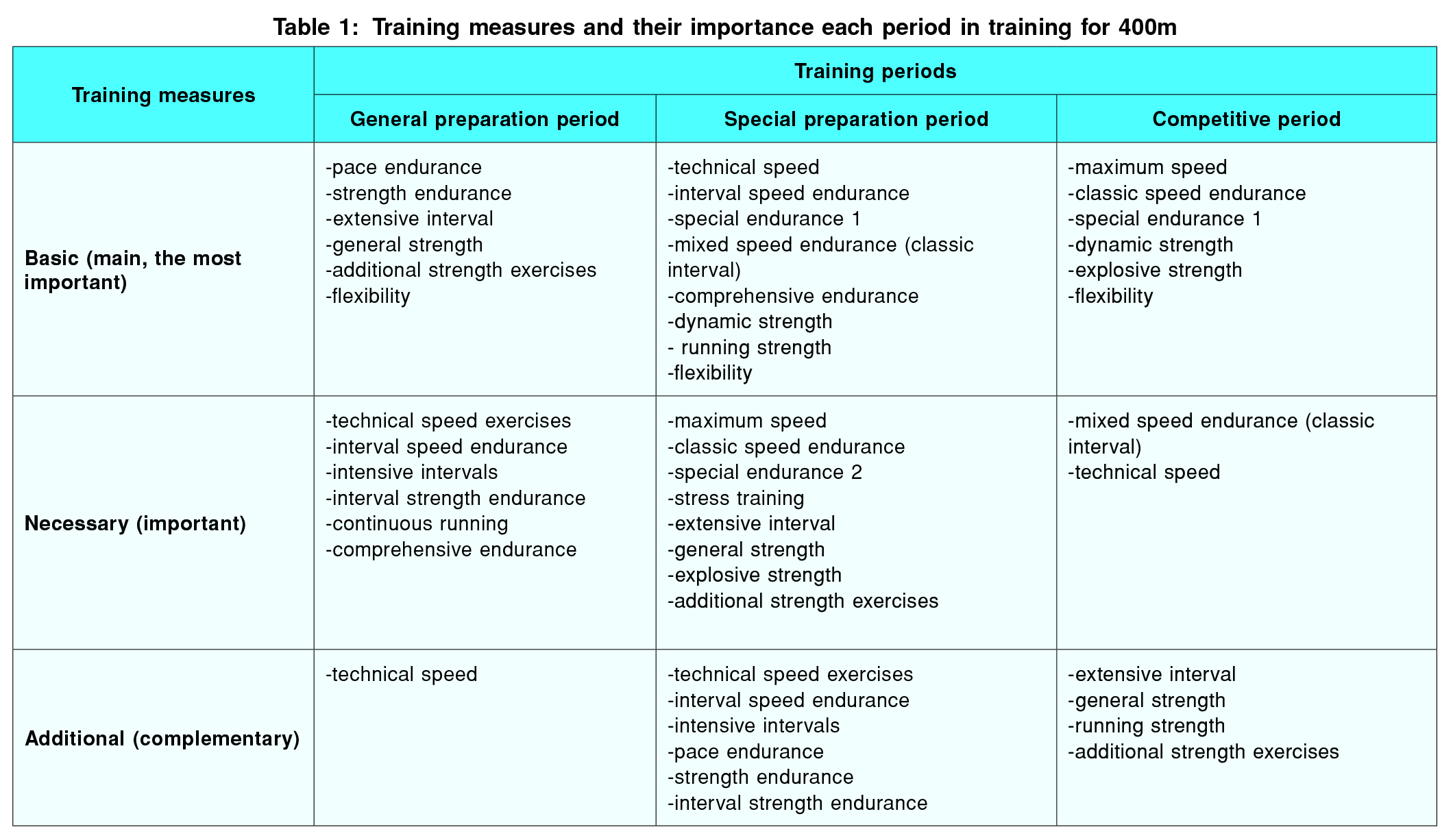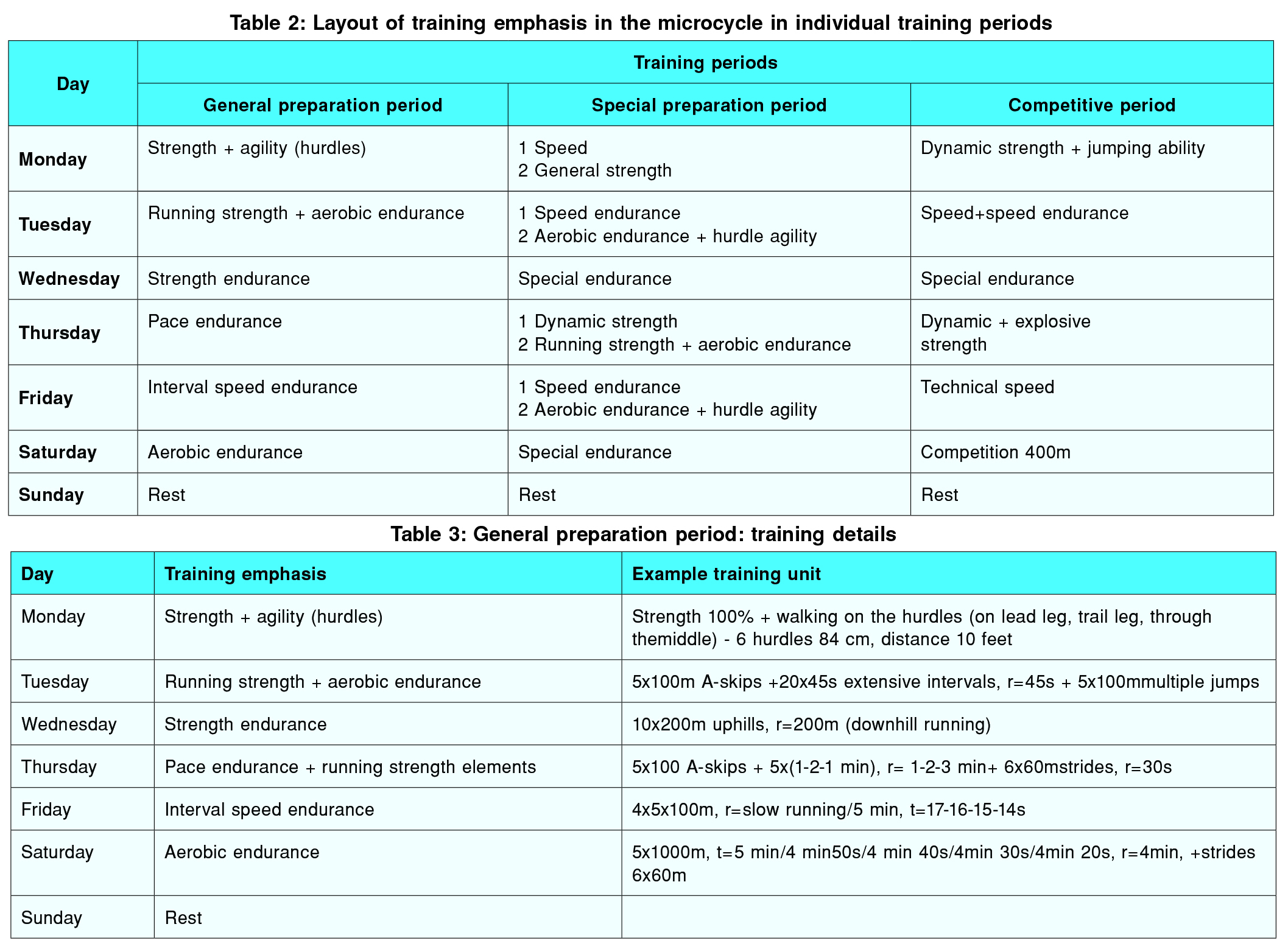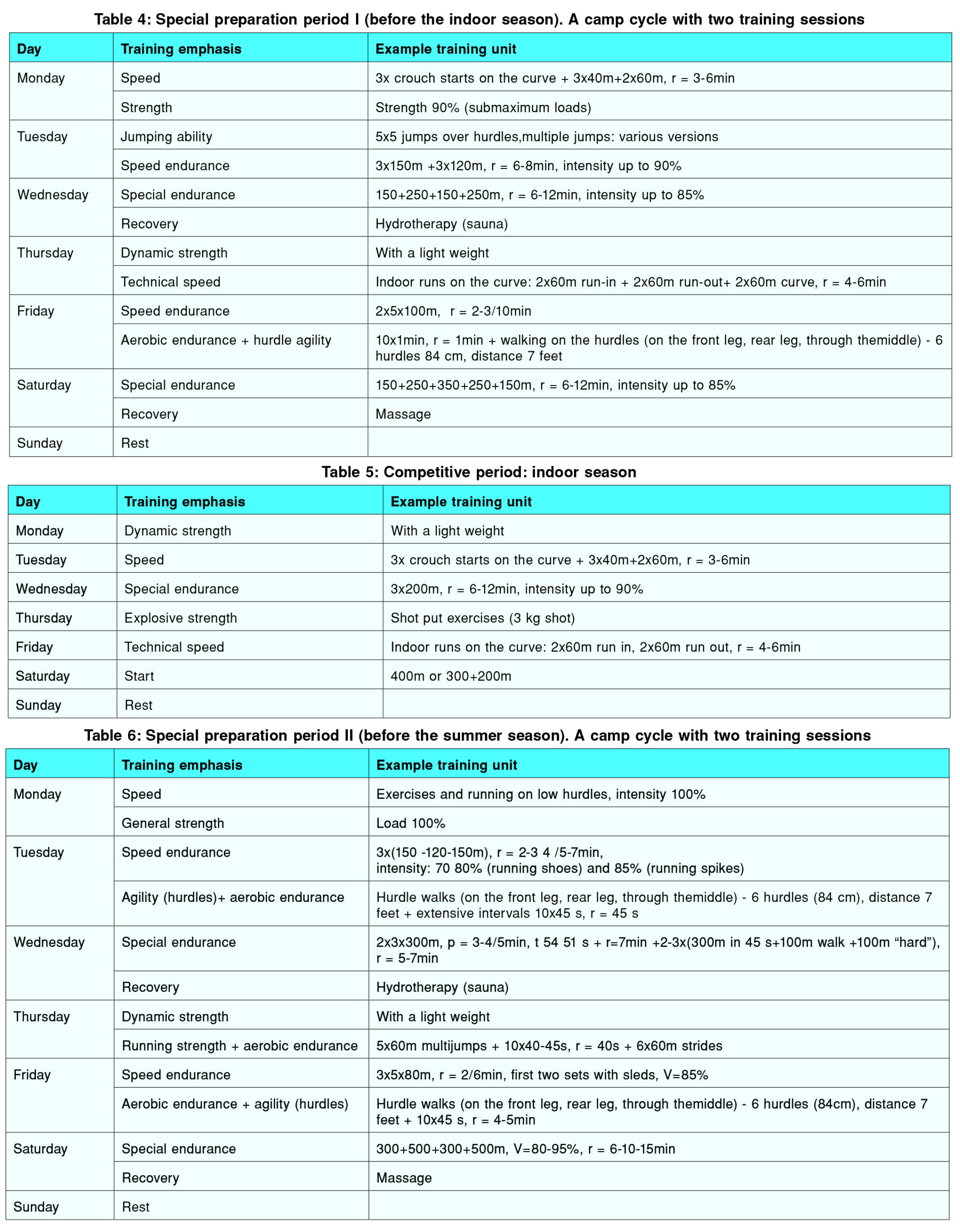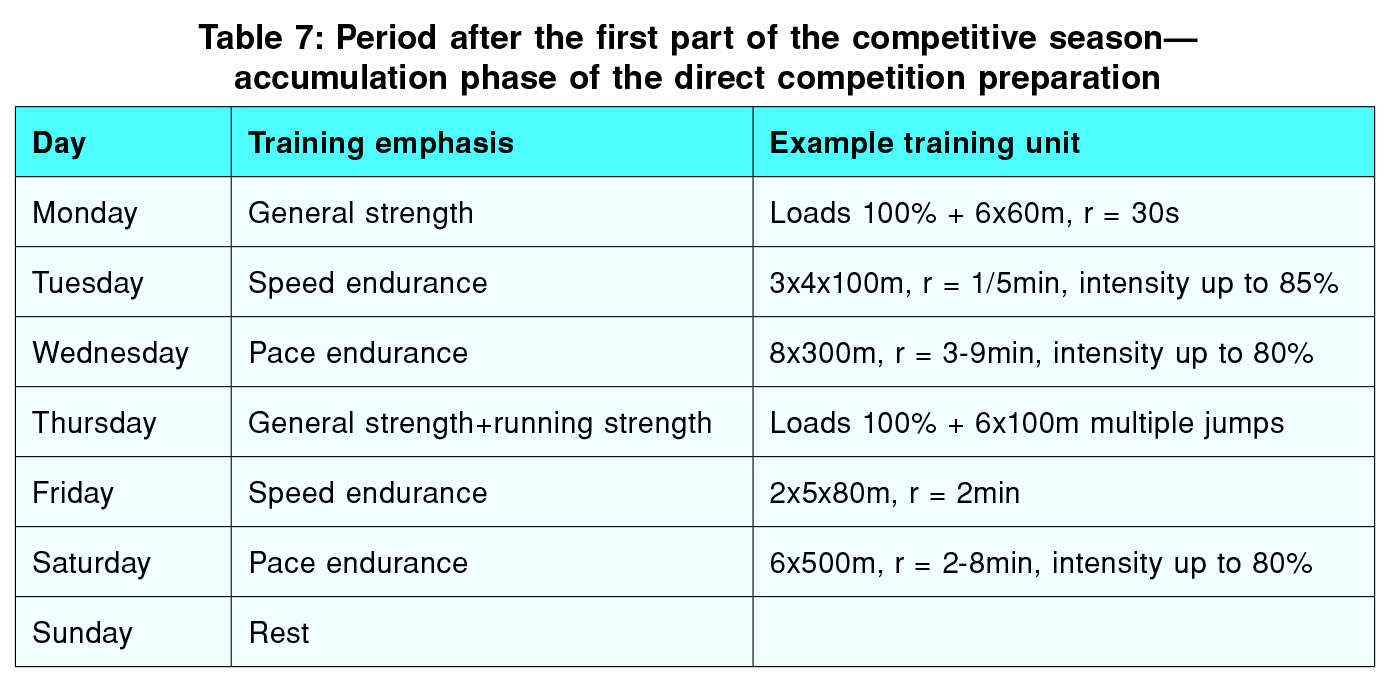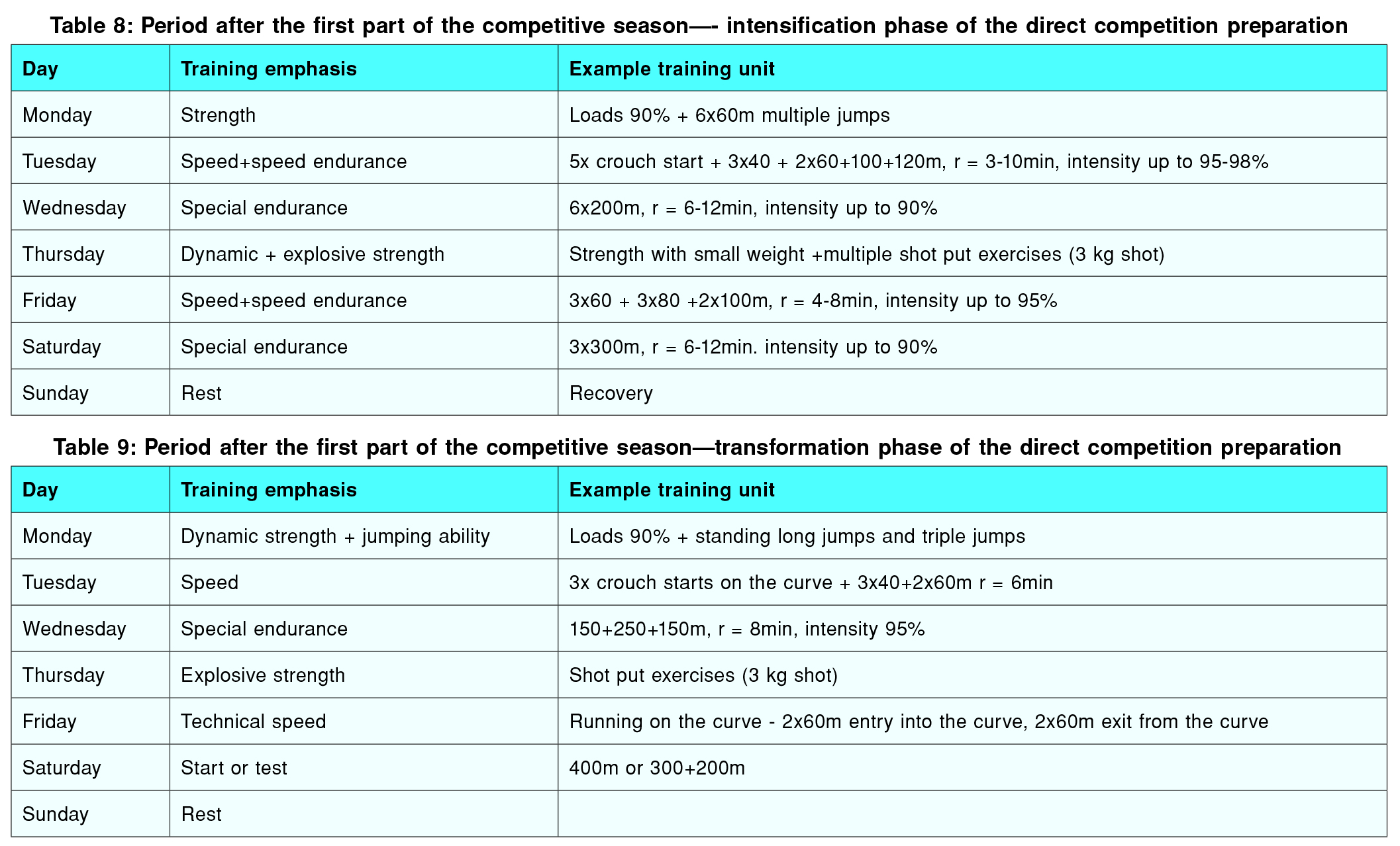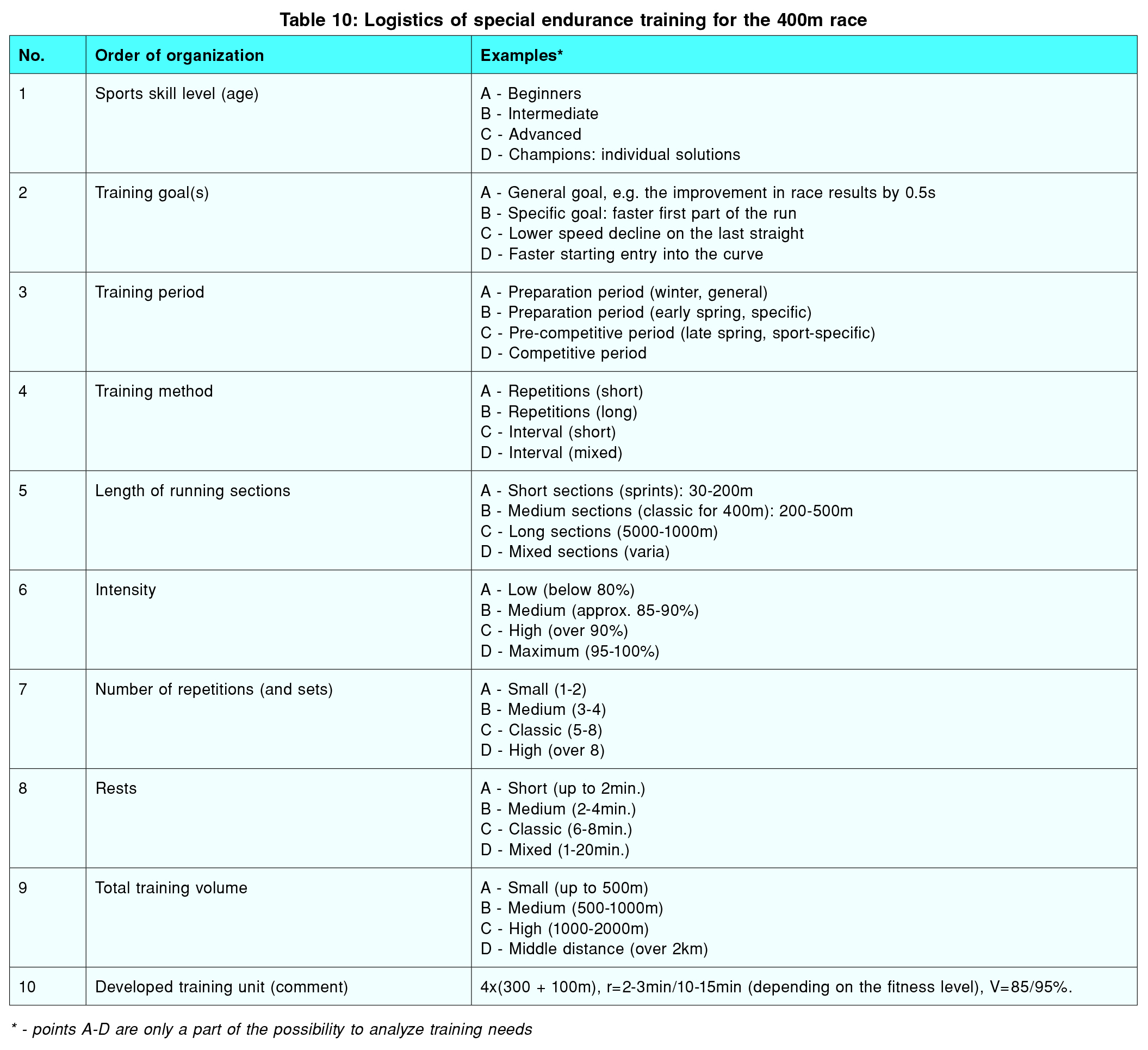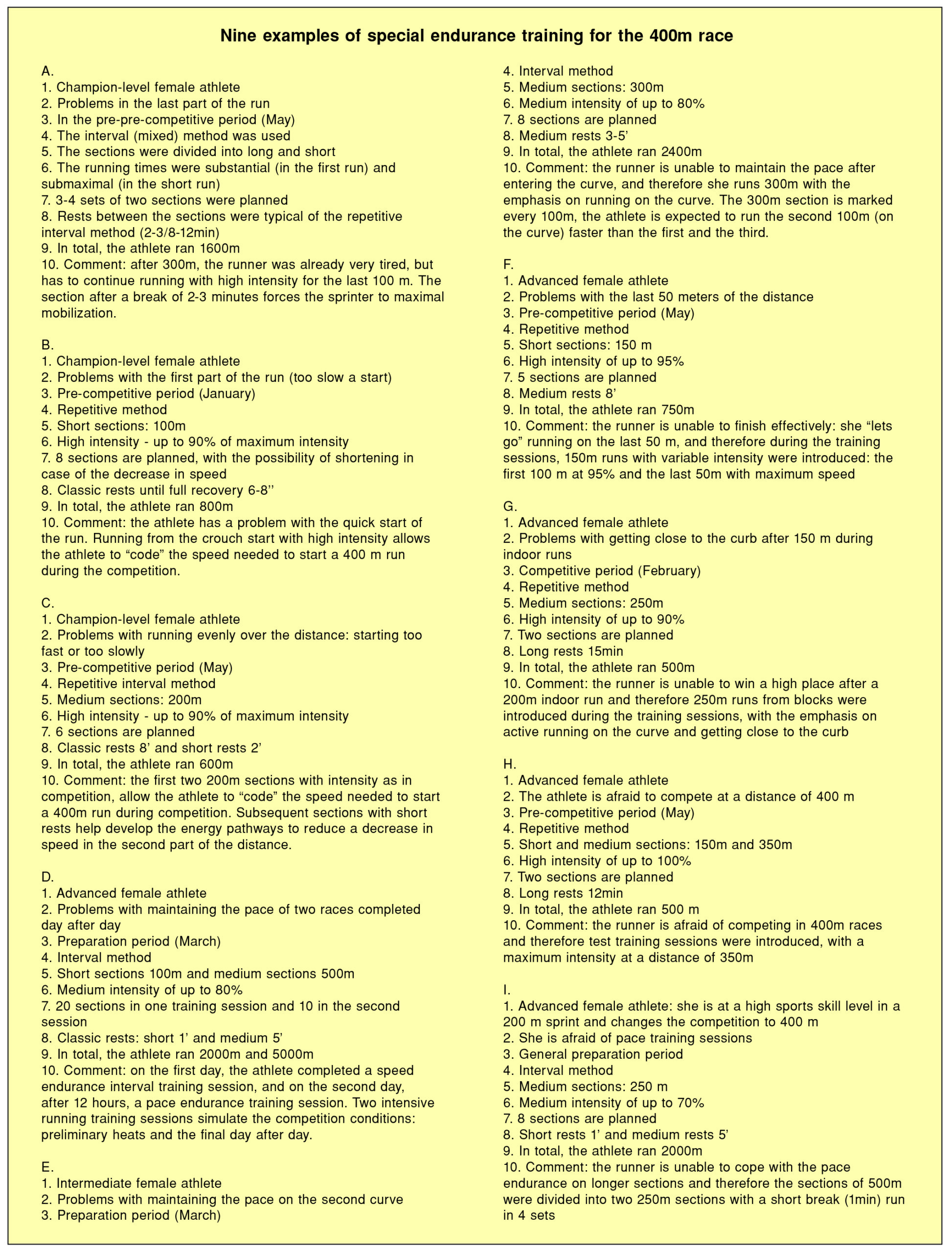Running Training for Women 400m, Part 2
This is a continuation of the article that appeared in TC#232 re the meticulous training data involving the Polish 400m champion.
By Janusz Iskra and Aleksander Matusiński The Jerzy Kukuczka Academy of Physical Education in Katowice, Poland
Training periodization
Achieving high performance during the season, especially peak performance during the most important competitions, depends on properly planned training work. Each training cycle contains data on the training loads to be used by the athlete, taking into account their magnitude, quality, and variations throughout the season. The complete training plan should include data on volume, intensity, and correction of the emphasis during individual training sessions in the microcycle. The plan should also include information on the training measures used and the fitness and technical requirements to be met by the athlete. In general, the annual training cycle in track & field can be divided into three periods: preparation period (general and special), competitive period, and the transition period. In the case of the athlete discussed in this study (she successfully participates in indoor competitions and is the current Polish indoor record holder, 8-times Polish champion, and 3-times World Cup finalist), there are two competitive periods (the indoor and summer competitive periods) and the associated two periods of general and special preparation.
Short description of preparation for the 2018 season
In 2017, Justyna Święty-Ersetic won two medals at the European Indoor Championships and a bronze medal at the World Championships in the 4×400 m relay. Furthermore, the sprinter improved her personal best significantly and achieved a second result in Europe (51.15 in Hengelo). Unfortunately, in the middle of the season, the athlete suffered a serious injury as she tore her ligaments in the ankle joint. The preparation period for the 2018 season started on 13 October 2017, without knowing how much the injured leg would affect the athlete’s training. All the above achievements from the previous year made her even more involved in training.
The athlete trained six times a week in her hometown of Racibórz, with rest days on Sundays. In the training camp cycle, Justyna usually performs 10 training sessions a week, with Sundays also left as rest days. After three weeks of quiet training at home, Justyna Święty-Ersetic had her first two-week training camp in Szklarska Poręba, Poland. During this camp, she focused on aerobic endurance, pace endurance, general strength, running strength, efficiency, and running technique. Another camp in Portugal in December, due to the warmer climate, allowed for more intensive speed endurance training performed in track spikes.
The athlete spent January in South Africa, in hot weather using excellent training facilities located at 1400m above sea level. With the possibility of training in a warm climate and at altitude, Justyna Święty performed training sessions with significant loads, both in terms of volume and intensity.
The athlete focused mainly on maximum strength, special endurance (after which she reached lactate levels of above 20 mmol/l), and speed endurance. At the same time, she continued to improve the previously developed abilities. The end of January and February were the period spent on two training camps in Spała, Poland, and the practice of the tasks related to the technique of running on the curve, maximum speed, dynamic strength, and speed and special endurance.
During the 2018 indoor season, Justyna Święty-Ersetic participated in 12 competitions, which included distances of 200, 300, and 400 meters. She often competed twice a day, e.g. 200 and 300m or preliminary heats and a semifinal. It was then that she set an indoor Polish record (51.78), took 4th place in the Indoor World Championships in Birmingham in the 400m and 2nd place in the 4×400 m relay.
After a few days off, the sprinter flew again to South Africa for three weeks, where she trained in a similar way to what she did in November and December, but with much greater intensity. In April, she participated in another camp in a warm climate on the island of Tenerife. The focus during this camp was on special endurance, speed endurance, maximum strength, and running technique. After her return, she stayed at a training camp in Spała, where she improved her abilities developed at previous training camps. The difference, however, was in reducing the number of sections, extending rests, and increasing the intensity during running training sessions.
After 10 days of competition in Osaka, the athlete started the competitive period, setting her personal best (51.05). After seven starts in 400m, the camp in Zakopane initiated the period of direct competition preparation for the most important competitions of the season, particularly the European Championships in Berlin. The direct competition preparation period consisted of classic phases of accumulation, intensification (during which the Polish Championship took place), and transformation. At the Polish Championship, where she was the favourite, the sprinter took only second place.
The European Championship in Berlin proved to be an extraordinary challenge because, after the winning final in the 400m and a new personal best (50.41), there were only 90 minutes before the relay. Despite this, the athlete went down in history, winning her second gold medal in the 4×400 at the Continental Championships.
The well planned one-year preparation period and the lack of training breaks caused by injuries contributed to the fact that Justyna Święty-Ersetic competed 19 times during the summer season, including 17 times in the 400m. In all with the indoor season, she competed 29 times, always achieving top results.
Interestingly, she actually competes as often every year. The number of starts increases as the sports skill level rises: on the one hand, the athlete is invited to international sporting events, prestigious competitions, and on the other hand, she participates in all the rounds at championships, including relays, which almost doubles the number of starts.
The transition period for this athlete lasted three weeks, focused on physical and mental recovery before the next season, which would last 12 months (the athlete started preparations at the beginning of November 2018 and ended the season with the Military World Games in Wuhan in late October 2019).
During the detraining in the transition period, Justyna Święty-Ersetic does not do any training, and most often she goes to warm countries and takes brine baths in the sea. The disadvantage is that in the initial period of preparation, the athlete has muscle and joint pain in the whole body and starts training from lower strength and endurance levels. A similar method was used by the Polish record holder Irena Szewińska, who did not participate in any activity during the period of detraining.
Details of training organization for the 2017-2018 season
Details of training organization for all periods of training are given in Tables 1-9. Table 10 offers an annual preparation cycle: organization of training for 400m adult female athletes in the 2018 season (original table of Polish Athletic Association)
The key point of the 400m training program for female runners is the training sessions focused on special endurance (see part 1 of the paper).
